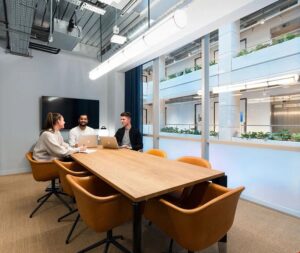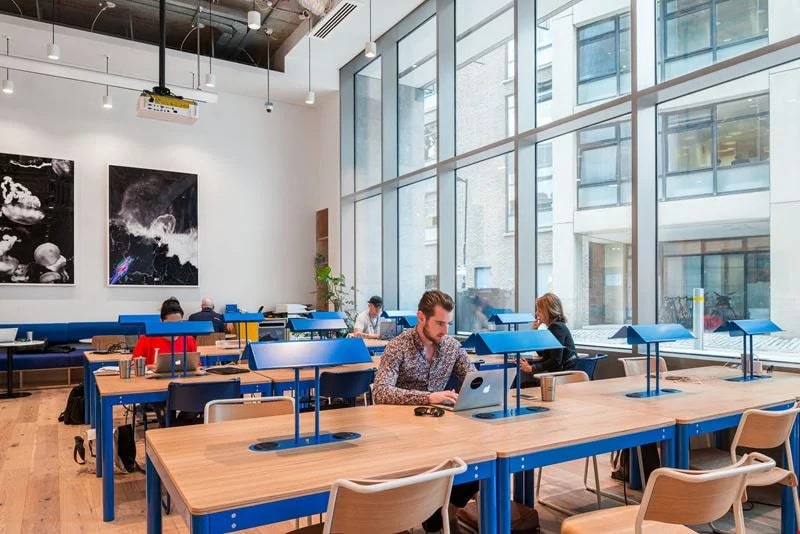One of the most appealing things about hybrid work is its flexibility, as it gives people a lot more control over their work/life balance. But it also allows more flexibility over how you actually approach your work, and allows different workplace personality types to work in ways that maximize their potential.
Once you understand these personality types, and how hybrid working can benefit them, you can tailor your hybrid work models to them in a way that lets everyone benefit.
Assessing Workplace Personality Types
Let’s be real, personality assessments aren’t an exact science, but they can offer frameworks to understand why some employees prefer different ways of working.
There are a few different models that can be used to assess different workplace personalities. For the purpose of this article, I’m going to focus on the Myers-Briggs Type Indicator (MBTI), as it’s one of the most established, widely understood, and popular personality assessments being used in workplaces.
MBTI and work personalities
MBTI first rose to prominence during World War 2 and has remained popular ever since. It’s an effective way of categorizing people’s personalities, as it assesses them across different spectrums. Rather than just saying ‘That person has a dominant personality, they’d make a good leader’, it looks at different factors, circumstances, and scenarios to create a more comprehensive perspective.
The different personality spectrums used by MBTI are:
– Extraversion vs. Introversion: Contrary to popular belief, this isn’t about preferring going clubbing or having a quiet night in. The concept of extroversion vs introversion is about what motivates and provides energy for people. Extroverts draw energy from external validation and other people, while introverts are more self-motivated.
– Sensing vs. Intuition: This is how different personality types process information. Sensing means using, well, your senses to observe the details of the world, and tend to prefer processing practical, detailed information. Intuitive personality types prefer abstract or big-picture concepts and look for patterns.
– Thinking vs. Feeling: These factors determine how people make decisions. Thinkers prefer to take a logical approach to decisions, based on practical considerations. Feelers tend to take a more nuanced approach, considering their own personal feelings and those of others who could be impacted by a decision.
– Judging vs. Perceiving: Despite the names, these factors are what determine how people react to structure. Judging personalities prefer structure structure, organization, and clear plans. Perceiving personalities prefer more flexibility and spontaneity.
In Myers-Briggs assessments, people are assessed on a scale of these different spectrums, and they can be different combinations. Where you lie on these different spectrums can influence what aspects of hybrid working that benefit you the most.

Extraversion vs. Introversion
If you’re more on the introverted side, you probably appreciate the quiet of remote work. And when you do need to join others, a hybrid setup means you can pop into essential in-person meetings while still enjoying plenty of time to recharge on your own. This is essential for software developers, artists, translators and anyone else enjoying solitary work.
If you’re an extrovert, the buzz of interacting with others fuels your energy. A structured day at the office offers those spontaneous moments of collaboration and the chance to build social connections. This balance helps offset the sometimes isolating nature of working remotely.
Sensing vs. Intuition
For those who lean towards sensing, clear, concrete tasks and a structured environment are major assets for you to get your job done. In-office days that come with set agendas and hands-on teamwork really play to your strengths, allowing you to tackle details systematically.
If you’re more of an intuitive type, you likely thrive on the freedom to explore big ideas. Working remotely frees you from the rigidity of routine, giving you the autonomy to think creatively and see the bigger picture.
Thinking vs. Feeling
For thinking types, you focus on logic and efficiency when working. A hybrid model suits you perfectly. Remote work lets you tackle problems independently, while office time is ideal for engaging in data-driven discussions and brainstorming solutions.
If you’re a feeling type, nurturing personal connections and a supportive atmosphere is what really matters. You tend to flourish with a mix of remote check-ins that keep you connected and in-office moments that build empathy and understanding.
Judging vs. Perceiving
Those with a judging personality often look for predictability and routine. Having fixed office days and clear hybrid policies aligns well with your need for structure, giving you a dependable rhythm to your work life.
If you’re a perceiving type, you likely value flexibility above all. The freedom to decide when and where you work lets you adapt to changes and seize opportunities as they come, keeping your workday dynamic and spontaneous.
Strategies for Customizing Hybrid Work Environments
Once you understand the different workplace personality types you can then tailor your approach to hybrid work to make sure they’re all getting the most benefit. We can broadly categorize the different aspects to tailor as communication and feedback, scheduling, team building, tools, and the actual design of your workspace.
Communication and feedback
When it comes to communication, it’s all about adapting our methods to fit different preferences. For example, if you’re someone who thrives on the energy of a live conversation, video calls can be really engaging. But if you prefer a more detailed and thoughtful approach, a well-crafted email might be just the ticket. Some team members might lean toward written feedback because it gives them time to reflect, while others appreciate quick, action-oriented updates.
Feedback and recognition are most meaningful when they’re personalized. Some people respond best to direct, results-based praise, while others might be more motivated by public recognition or even a heartfelt note that shows genuine appreciation.

Scheduling
Scheduling is another area where flexibility within a structure really makes a difference. Imagine having the freedom to block off remote time to focus on big goals, as some might do, or having consistent office days that foster a sense of community and connection. For those who like a bit of variety in their daily routine, a dynamic schedule keeps things fresh, while a fixed schedule might be best for diving deep into complex tasks.
Team building
When planning team-building activities, a little balance goes a long way. You might find that creative virtual workshops are a hit with some, while others enjoy problem-solving challenges or reflective roundtables. And then there are those who get a real kick out of goal-oriented hackathons. Each activity is designed to engage different strengths and preferences.
Tools
The right tools and technologies can really support these varied approaches. Imagine using an app that lets everyone plan their office days around their personal needs, or a project management tool that not only tracks details meticulously but also offers a space for visual brainstorming. It’s all about finding the right mix that works for everyone.
Workplace design
Lastly, designing a workspace that caters to a variety of needs can make a huge difference. Think of having quiet zones for those who need a break from constant interaction, collaborative hubs for team players, and flexible desks that adapt to different work styles. This way, every team member can find their ideal spot to get the best out of their day.
Considerations and Potential Challenges
Personality frameworks are guides, not absolutes. Most employees exhibit traits from multiple types, and rigid categorization risks oversimplifying things.
Overemphasizing remote work may isolate social types, while too much office time could drain introverts. Striking a balance requires you to have an ongoing dialogue and a willingness to adjust policies. The goal isn’t to label employees but to create a culture where differences are acknowledged as strengths.
Once you recognize how personality types shape people’s work preferences, you can design environments and models that unlock potential. You need a dynamic approach—mixing structure with flexibility, autonomy with collaboration, and quiet focus with creative energy.









